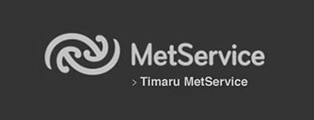Retrieved from http://ecan.govt.nz/news-and-notices/news/pages/nutrient-loss-measurement-tool-upgrade.aspx
Environment Canterbury today welcomed the recent upgrade to the nutrient loss measurement tool, OVERSEER®.
Chief Executive Bill Bayfield said improvements to the irrigation component of OVERSEER® would highlight the significant gains to be made from enhancements to irrigation efficiency. “It is important to note, however, that while the improvements introduced by OVERSEER® 6.2 will change estimated nutrient loss numbers they will not change the reality with regard to actual nutrient losses,” Mr Bayfield said.
Environment Canterbury is working to help make sure decision-makers are provided with options for dealing with OVERSEER® version changes. “We are committed to working with other councils, the owners of OVERSEER® and industry in seeking solutions to these challenges,” Bill Bayfield said. A plan change later in 2015 will help address them.
“Environment Canterbury wishes to ensure that the focus is on good management practices by farmers and nutrient outputs,” Mr Bayfield said. “OVERSEER® provides a method of benchmarking against good management practices. Its strength is the way it can be used in a relative rather than an absolute way. Our challenge is to develop policy that allows for this.”
Environment Canterbury has moved to assure farmers who have made investment decisions based on previous versions of OVERSEER® that they would not be disadvantaged as a result of these changes.
“The planning framework for land use and water quality interactions is based on management of nutrient outputs rather than inputs,” Bill Bayfield said. “Landowners have maximum freedom to decide how best to manage their land to minimise nutrient losses. This approach, which is of benefit both to farmers and to water quality outcomes, will not change with a new version of the measurement tool.
“It is not Environment Canterbury’s intention to immediately require more farmers to get a consent to farm just because of an OVERSEER® upgrade,” Mr Bayfield concluded. “We will work with individual farmers, industry bodies and zone committees to focus on achieving the outcomes anticipated when the proposed Canterbury Land & Water Regional Plan was drafted.”
For more information on OVERSEER®, go to http://ecan.govt.nz/publications/Plans/lwrp-infosheet-farmers-overseer.pdf, or www.overseer.org.nz
For information on the proposed Land & Water Regional Plan, go to www.ecan.govt.nz/lwrp
Background
OVERSEER® is the management tool that has been selected for estimating nutrient losses from a farming activity under the proposed Canterbury Land & Water Regional Plan.
The OVERSEER® model requires users to enter information about their farming system, such as production, location and soil types.
Based on this information, a nutrient budget is prepared which estimates the long-term average nitrogen loss from a property.
A nutrient budget is prepared for both the “nitrogen baseline” period (1 July 2009 – 30 June 2013), and the most recent four-year period (the nitrogen loss calculation period).
Once these budgets have been prepared, the results should be compared against the rules in the proposed Land & Water Regional Plan to determine whether a farming activity is permitted or requires a consent.
When updates to the OVERSEER® model are made, the most recent version must be used to calculate the nitrogen baseline and nitrogen loss.
Farmers should retain all the farm information/data used to prepare the original nutrient budget because this will be needed to prepare future budgets.



